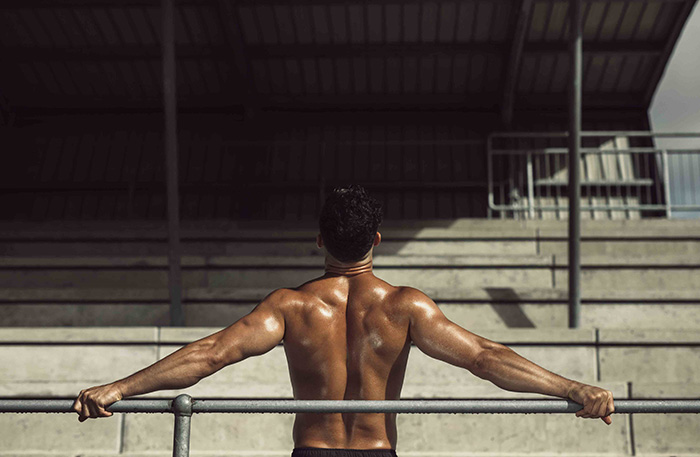Use the cable straight arm pulldown to get a lean and defined upper body
Add size and strength to your chest and back at the same time by getting to grips with the cable straight arm pulldown to build a broader and more athletic upper body
Should I do the cable straight arm pulldown?
The cable machine straight-arm pulldown is one of those exercises that not many people do (or if they do do it, they don’t do it very well), but should feature in every single training programme designed to add lean muscle mass quickly and effectively.
Why? For a couple of key reasons: firstly, it’s one of only a very select number of exercises that work your chest and back at the same time (another is the flat bench dumbbell pullover, as is the Nautilus pullover machine, but only a handful of old-school gyms have them), which means you get a two-for-one muscle-boosting benefit by hitting two huge muscle groups to add size and strength in a single set.
The other big reason is the cable straight-arm pullover works your back and chest (and the front of your shoulders), through a movement pattern range it’s impossible to replicate with other gym-floor kit. If performed properly, the move provides a fantastic stretch in the lats (propelry known as the latissimus dorsi, which are the large, flat muscles on either side of your upper back that are responsible for adducting, extending, and internally rotating the shoulders) at the start of each rep, as well as a strong and powerful contraction in the muscles of your chest at the bottom of each rep, when your hands are closest to your body (especially when you pause and hold this bottom position for a one or two count).
And unlike the flat bench dumbbell pullover, which can be a very problematic exercise if you have existing shoulder strength, mobility or flexibility issues, the cable straight-arm pulldown can allow you to lift heavier in a far safer way, which makes it a superior option to work the target muscles without risking injury to your shoulder, elbow or wrist joints.
How do I do the cable straight arm pulldown?
Stand tall in front of one side of a cable machine, holding with an overhand grip a straight-bar handle attached with a carabiner to the pulley positioned at the very highest setting.
Take a few steps backwards until your arms are straight, then hinge forwards from your hips so that your torso is leaning towards the cable machine. Keep your chin up, your back straight and your core tight, and you can bend your knees slightly to improve your stability. This is the start position, and in it you should feel a good stretch down the sides of your lats: if you don’t, simply take more steps backwards until you can feel that stretch.
Keeping your back straight, your chin and chest up, and your arms straight, bring your hands down in a smooth and continuous movement until the bar touches the top of your thighs.
Pause in this bottom position for one or two seconds, ensuring your arms are fully straight, with a real focus on squeezing your chest, back and abs muscles as hard as you can. This will work your muscles harder as they fight to control and keep the weight in this position.
Without letting your arms bend, slowly return to the start position maintaining complete control over the load until you’re back in the start position and can feel a good stretch in your lats. Pause briefly to eliminate any momentum or bounce from the previous rep before starting the next one.
What cable straight arm pulldown variations can I do?
A very common variation of the cable straight-arm pulldown uses a double-rope handle, rather than a straight bar handle, to perform the exercise. Using a double-rope handle allows you to move your lats through a greater range of motion, because you can take your hands to either side of your thighs to go past your body, whereas using a straight bar limits the movement pattern to your thighs and no further.
You may find you need to select a slightly lighter weight when using the double-rope handle because of the greater range and subsequent workload on your muscles, so it’s well worth doing both variations of the move as part of your progressive training programme to maximise lean muscle mass growth.
Find your perfect fat-loss plan!
Take the New Body quiz!

